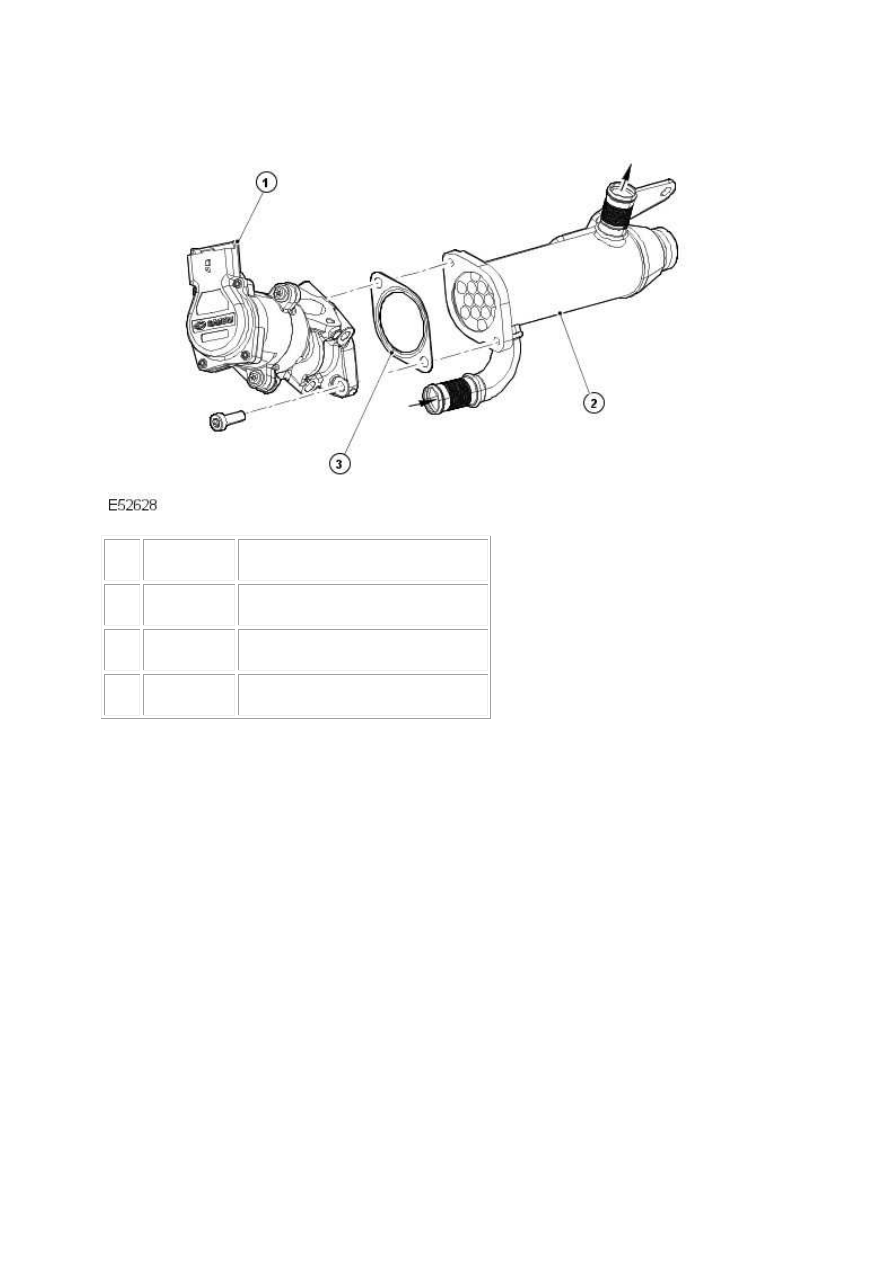Jaguar XJ (X350). Manual - part 789

Exhaust Gas Re-Circulation
Item
Part Number
Description
1
Exhaust gas recirculation (EGR) valve
2
EGR cooler
3
Gasket
The exhaust gas re-circulation (EGR) system is fitted to the engine in order to reduce the amount of
nitrogen oxide (NOx). This is done by reducing the temperature of the combustion process by
introducing some waste exhaust gases into the inlet manifold. The effect of this is that there is a
depletion of oxygen which reduces the temperature of the combustion process and in turn reduces
the amount of NOx produced.
The engine control module (ECM) will determine the amount of EGR operation depending on the
engine rpm, intake air temperature, coolant temperature and fuel flow rate. The amount of exhaust
gas being recirculated is measured by a combination of position sensing of the valves and a mass air
flow (MAF) sensor.
The EGR valves are operated through their full range at each engine start-up. This is to clear any
carbon deposits that may have built up whilst the engine was running.
The EGR system is continually monitored for faults. Depending on how the system fails, the ECM will
dictate whether the malfunction indication light (MIL) is on or off. In the event of a failure of the EGR
system, the ECM will use substitute values and the EGR function will become inoperative.